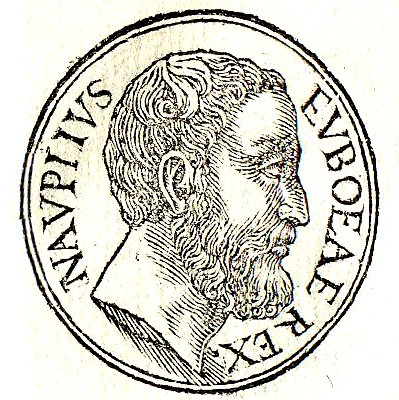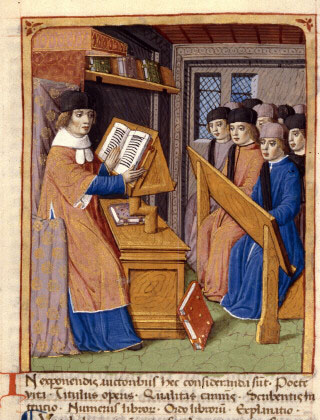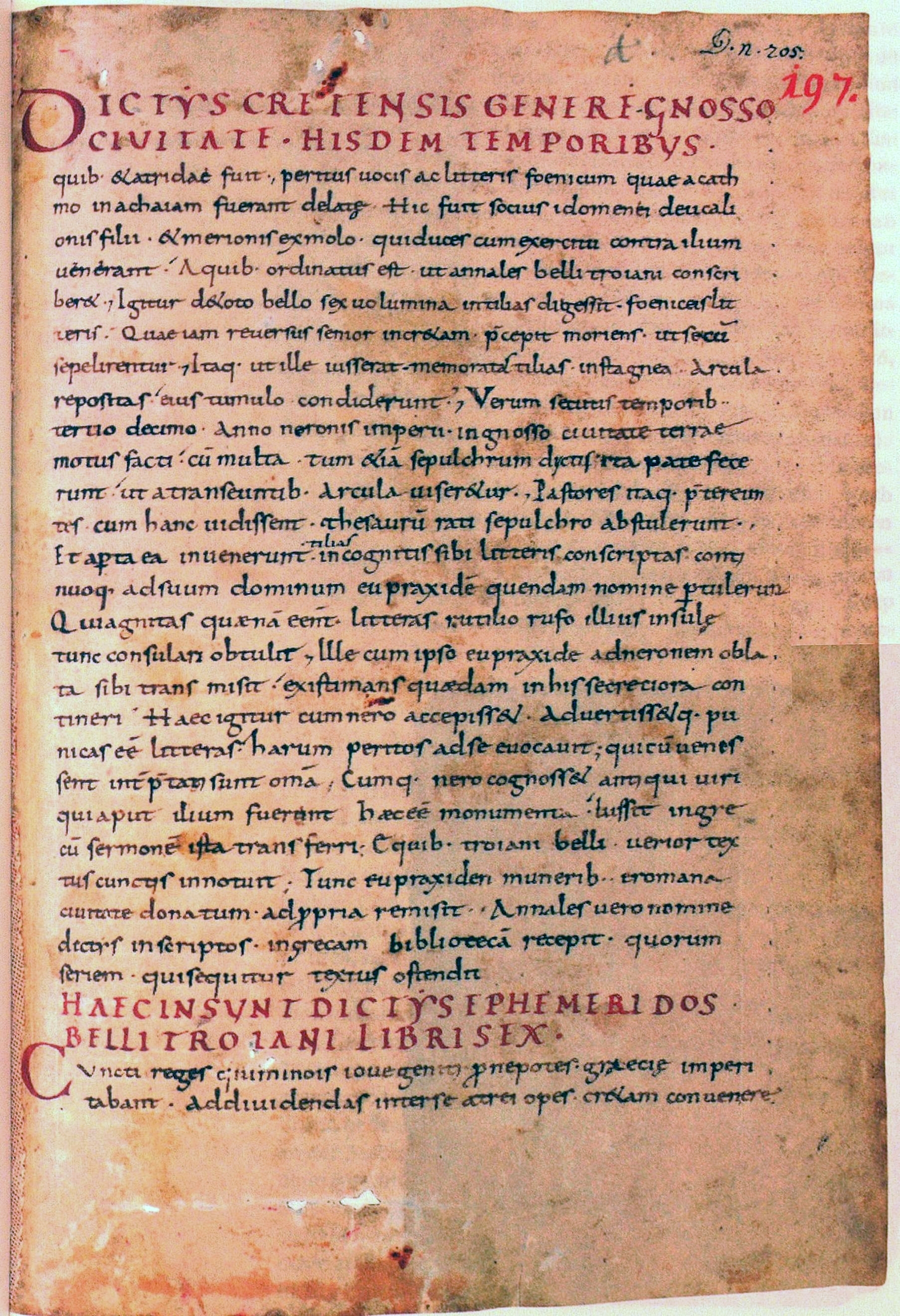|
Hesione (mythology)
In Greek mythology, the name Hesione ( /hɪˈsaɪ.əniː/; Ancient Greek: Ἡσιονη) refers to various mythological figures: * Hesione, a daughter of Oceanus. *Hesione, also called Isonoe, one of the Danaids who became the lover of Zeus and bore a son by him, Orchomenos. *Hesione, a Trojan princess and daughter of Laomedon. * Hesione, one of the names given to the wife of Nauplius, who was the father of Palamedes, Oiax and Nausimedon. The mythographer Apollodorus reports that, according to Cercops Nauplius' wife was Hesione, and that in the ''Nostoi'' (''Returns''), an early epic from the Trojan cycle of poems about the Trojan War, his wife was Philyra, but that according to the "tragic poets" his wife was Clymene. * Hesione, daughter of Celeus, was one of the sacrificial victims of Minotaur.Servius, Commentary on Virgil's ''Aeneid'' 6.21 She may be the sister of another victim, Porphyrion granting that their father named Celeus is the same. Other *Wonder Woman (comic b ... [...More Info...] [...Related Items...] OR: [Wikipedia] [Google] [Baidu] |
Greek Mythology
A major branch of classical mythology, Greek mythology is the body of myths originally told by the Ancient Greece, ancient Greeks, and a genre of Ancient Greek folklore. These stories concern the Cosmogony, origin and Cosmology#Metaphysical cosmology, nature of the world, the lives and activities of List of Greek mythological figures, deities, Greek hero cult, heroes, and List of Greek mythological creatures, mythological creatures, and the origins and significance of the ancient Greeks' own cult (religious practice), cult and ritual practices. Modern scholars study the myths to shed light on the religious and political institutions of ancient Greece, and to better understand the nature of myth-making itself. The Greek myths were initially propagated in an oral tradition, oral-poetic tradition most likely by Minoan civilization, Minoan and Mycenaean Greece, Mycenaean singers starting in the 18th century BC; eventually the myths of the heroes of the Trojan War and its after ... [...More Info...] [...Related Items...] OR: [Wikipedia] [Google] [Baidu] |
Nauplius (mythology)
In Greek mythology, Nauplius ( grc, Ναύπλιος, "Seafarer") is the name of one (or more) mariner heroes. Whether these should be considered to be the same person, or two or possibly three distinct persons, is not entirely clear. The most famous Nauplius, was the father of Palamedes, called Nauplius the Wrecker, because he caused the Greek fleet, sailing home from the Trojan War, to shipwreck, in revenge for the unjust killing of Palamedes. This Nauplius was also involved in the stories of Aerope, the mother of Agamemnon and Menelaus, and Auge, the mother of Telephus. The mythographer Apollodorus says he was the same as the Nauplius who was the son of Poseidon and Amymone. Nauplius was also the name of one of the Argonauts, and although Apollonius of Rhodes made the Argonaut a direct descendant of the son of Poseidon, the Roman mythographer Hyginus makes them the same person. However, no surviving ancient source identifies the Argonaut with the father of Palamedes. Son of Pose ... [...More Info...] [...Related Items...] OR: [Wikipedia] [Google] [Baidu] |
Maurus Servius Honoratus
Servius was a late fourth-century and early fifth-century grammarian. He earned a contemporary reputation as the most learned man of his generation in Italy; he authored a set of commentaries on the works of Virgil. These works, ''In tria Virgilii Opera Expositio'', constituted the first incunable to be printed at Florence, by Bernardo Cennini, in 1471. In the ''Saturnalia'' of Macrobius, Servius appears as one of the interlocutors; allusions in that work and a letter from Symmachus to Servius indicate that he was not a convert to Christianity. Commentary on Virgil The commentary on Virgil ( la, In Vergilii Aeneidem commentarii) survives in two distinct manuscript traditions. The first is a comparatively short commentary, attributed to Servius in the superscription in the manuscripts and by other internal evidence. The second class derive from the 10th and 11th centuries, embed the same text in a much expanded commentary. The copious additions are in contrasting style t ... [...More Info...] [...Related Items...] OR: [Wikipedia] [Google] [Baidu] |
Sacrificial Victims Of Minotaur
In Greek mythology, the people of Athens were at one point compelled by King Minos of Crete to choose 14 young noble citizens (seven young men and seven maidens) to be offered as sacrificial victims to the half-human, half-taurine monster Minotaur to be killed in retribution for the death of Minos' son Androgeos. Mythology The victims were drawn by lots, were required to go unarmed, and would end up either being consumed by the Minotaur or getting lost and perishing in the Labyrinth, the maze-like structure where the Minotaur was kept. The offerings were to take place every one, seven or nine years and lasted until Theseus volunteered to join the third group of the would-be victims, killed the monster, and led his companions safely out of the Labyrinth. Plutarch in his ''Life of Theseus'' cites a rationalized version of this myth, referring to Philochorus who in his turn claimed to be following a local Cretan tradition. According to it, the young people were not actually killed bu ... [...More Info...] [...Related Items...] OR: [Wikipedia] [Google] [Baidu] |
Celeus
Celeus or Keleus (Ancient Greek: Κελεός ''Keleós'') was the king of Eleusis in Greek mythology, husband of Metaneira and father of several daughters, who are called Callidice, Demo, Cleisidice and Callithoe in the ''Homeric Hymn to Demeter'', and Diogeneia, Pammerope and Saesara by Pausanias. Mythology In the Homeric Hymn to Demeter, Celeus was one of the original priests of Demeter, one of the first people to learn the secret rites and mysteries of Demeter's cult the Eleusinian Mysteries. Diocles, Eumolpos, Triptolemus and Polyxeinus were the others of the first priests. While Demeter was searching for her daughter, having taken the form of an old woman called Doso, she received a hospitable welcome from Celeus, the king of Eleusis in Attica. He asked her to nurse Demophon, his youngest son by Metaneira. As a gift to Celeus, because of his hospitality, Demeter planned to make Demophon immortal by burning his mortal spirit away in the family hearth every night. ... [...More Info...] [...Related Items...] OR: [Wikipedia] [Google] [Baidu] |
Dictys Cretensis
Dictys Cretensis, i.e. Dictys of Crete (, ; grc, Δίκτυς ὁ Κρής) of Knossos was a legendary companion of Idomeneus during the Trojan War, and the purported author of a diary of its events, that deployed some of the same materials worked up by Homer for the ''Iliad''. The story of his journal, an amusing fiction addressed to a knowledgeable Alexandrian audience, came to be taken literally during Late Antiquity. Literary history In the 4th century AD a certain Q. Septimius brought out ''Dictys Cretensis Ephemeris belli Trojani'' ("Dictys of Crete, chronicle of the Trojan War") in six books, a work that professed to be a Latin translation of the Greek version. Its chief interest lies in the fact that, as knowledge of Greek waned and disappeared in Western Europe, this and the ''De excidio Trojae'' of Dares Phrygius were the sources from which the Homeric legends were transmitted to the Romance literature of the Middle Ages. An elaborate frame story presented in the prolog ... [...More Info...] [...Related Items...] OR: [Wikipedia] [Google] [Baidu] |
Clymene (mythology)
In Greek mythology, the name Clymene or Klymene (; grc, Κλυμένη ''Kluménē'' means 'fame') may refer to: * Clymene, the wife of the Titan Iapetus, was one of the 3,000 Oceanids, the daughters of the Titans Oceanus and his sister-spouse Tethys. She was the mother of Atlas, Epimetheus, Prometheus, and Menoetius; other authors relate the same of her sister Asia. A less common genealogy makes Clymene the mother of Deucalion by Prometheus. She may also be the Clymene referred to as the mother of Mnemosyne by Zeus.Hyginus, ''Fabulae'Preface/ref> In some myths, Clymene was one of the nymphs in the train of Cyrene. * Clymene, another Oceanid, was given as the wife to King Merops of Aethiopia and was, by Helios, the mother of Phaethon and the Heliades. Others include: * Clymene, the name of one or two Nereid(s), 50 sea-nymph daughters of the 'Old Man of the Sea' Nereus and the Oceanid Doris. Clymene and her other sisters appeared to Thetis when she cries out in sympathy for t ... [...More Info...] [...Related Items...] OR: [Wikipedia] [Google] [Baidu] |
Philyra (mythology)
Philyra or Phillyra (: Ancient Greek: Φιλύρα means "Tilia, linden-tree") is the name of three distinct characters in Greek mythology. *Philyra (Oceanid), Philyra, an Oceanid and mother by Cronus of Chiron. * Philyra, one of the names given to the wife of Nauplius (mythology), Nauplius, who was the father of Palamedes (Greek mythology), Palamedes, Oeax (mythology), Oiax and Nausimedon. The mythographer Bibliotheca (Pseudo-Apollodorus), Apollodorus reports that, in the ''Nostoi'' (''Returns''), an early epic from the Epic Cycle, Trojan cycle of poems about the Trojan War, Nauplius' wife was Philyra, and that according to Cercops his wife was Hesione (mythology), Hesione, but that according to the "tragic poets" his wife was Clymene (mythology), Clymene. * Philyra or Phillyra, daughter of the river Asopus, and the mother of Hypseus by Peneius.Scholia on Pindar, ''Pythian Ode'' 9. 27a The same source points out that phillyra's real name is Creusa (Naiad), Creusa is given instead o ... [...More Info...] [...Related Items...] OR: [Wikipedia] [Google] [Baidu] |
Trojan War
In Greek mythology, the Trojan War was waged against the city of Troy by the Achaeans (Greeks) after Paris of Troy took Helen from her husband Menelaus, king of Sparta. The war is one of the most important events in Greek mythology and has been narrated through many works of Greek literature, most notably Homer's ''Iliad''. The core of the ''Iliad'' (Books II – XXIII) describes a period of four days and two nights in the tenth year of the decade-long siege of Troy; the ''Odyssey'' describes the journey home of Odysseus, one of the war's heroes. Other parts of the war are described in a cycle of epic poems, which have survived through fragments. Episodes from the war provided material for Greek tragedy and other works of Greek literature, and for Roman poets including Virgil and Ovid. The ancient Greeks believed that Troy was located near the Dardanelles and that the Trojan War was a historical event of the 13th or 12th century BC, but by the mid-19th century AD, both the ... [...More Info...] [...Related Items...] OR: [Wikipedia] [Google] [Baidu] |
Epic Cycle
The Epic Cycle ( grc, Ἐπικὸς Κύκλος, Epikòs Kýklos) was a collection of Ancient Greek epic poems, composed in dactylic hexameter and related to the story of the Trojan War, including the ''Cypria'', the '' Aethiopis'', the so-called ''Little Iliad'', the ''Iliupersis'', the ''Nostoi'', and the ''Telegony''. Scholars sometimes include the two Homeric epics, the ''Iliad'' and the ''Odyssey'', among the poems of the Epic Cycle, but the term is more often used to specify the non-Homeric poems as distinct from the Homeric ones. Unlike the ''Iliad'' and the ''Odyssey'', the cyclic epics survive only in fragments and summaries from Late Antiquity and the Byzantine period. The Epic Cycle was the distillation in literary form of an oral tradition that had developed during the Greek Dark Age, which was based in part on localised hero cults. The traditional material from which the literary epics were drawn treats Mycenaean Bronze Age culture from the perspective of Iron A ... [...More Info...] [...Related Items...] OR: [Wikipedia] [Google] [Baidu] |
Nostoi
The ''Nostoi'' ( el, Νόστοι, ''Nostoi'', "Returns"), also known as ''Returns'' or ''Returns of the Greeks'', is a lost Epic poetry, epic of ancient Greek literature. It was one of the Epic Cycle, that is, the Trojan cycle, which told the entire history of the Trojan War in epic verse. The story of the ''Nostoi'' comes chronologically after that of the ''Iliou persis'' (''Sack of Ilium''), and is followed by that of the ''Odyssey''. The author of the ''Nostoi'' is uncertain: ancient writers attributed the poem variously to Agias (8th century BC), Homer (8th century BC), and Eumelos (8th century BC) (see Cyclic poets). The poem comprised five books of verse in dactylic hexameter. The word ''nostos'' means "return home". Date The date of composition of the ''Nostoi'', and the date when it was set in writing, are both very uncertain. The text is most likely to have been finalized in the seventh or sixth century BC. Content The ''Nostoi'' relates the return home of the Greek hero ... [...More Info...] [...Related Items...] OR: [Wikipedia] [Google] [Baidu] |
Cercops
Cercops ( grc, Κέρκωψ) was one of the oldest Orphic poets. He was called a Pythagorean by Clement of Alexandria, which might have meant a Neopythagorean.Clement of Alexandria, '' Stromata'', i. Cicero, was said by Epigenes of Alexandria to have been the author of an Orphic epic poem entitled the "Descent to Hades", which seems to have been extant in the Alexandrian period. Others attribute this work to Prodicus of Samos, or Herodicus of Perinthus, or Orpheus of Camarina.Suda, ''Orpheus''. Epigenes also assigns to Cercops the Orphic which was ascribed by some to Theognetus of Thessaly, and was a poem in twenty-four books. The book ''The works of Aristotle'' (1908, p. 80 Fragments) mentioned. :Aristotle Aristotle (; grc-gre, Ἀριστοτέλης ''Aristotélēs'', ; 384–322 BC) was a Greek philosopher and polymath during the Classical period in Ancient Greece. Taught by Plato, he was the founder of the Peripatetic school of phil ... says the poet ''Or ... [...More Info...] [...Related Items...] OR: [Wikipedia] [Google] [Baidu] |




